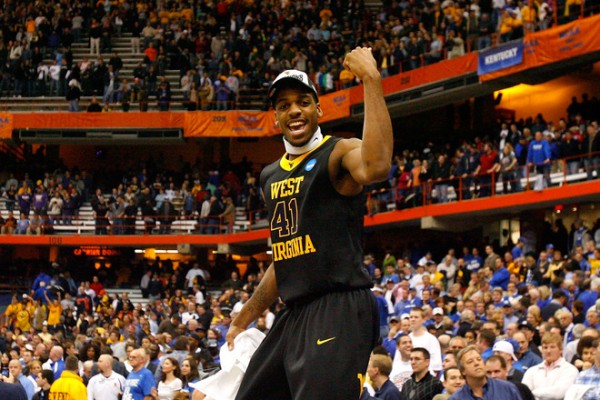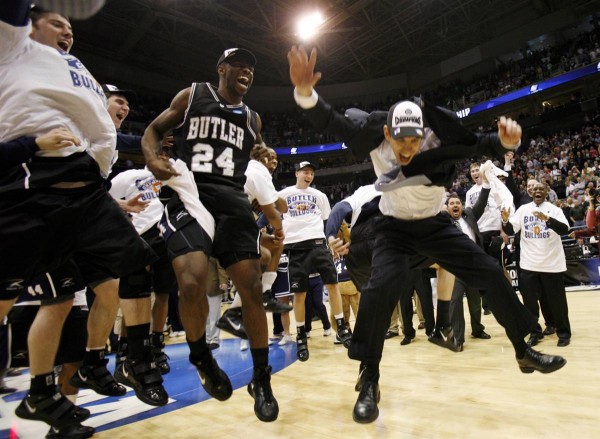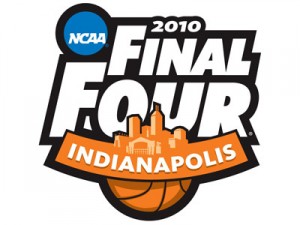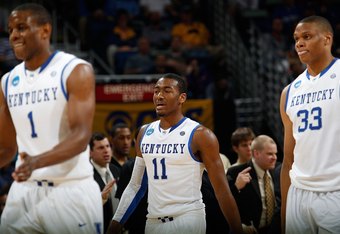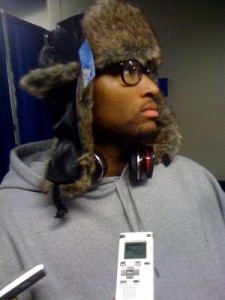Elite Eight Game Analysis: Sunday Afternoon
Posted by rtmsf on March 28th, 2010Over the next two days, RTC will break down the regional final games using our best analytical efforts to understand these teams, the matchups and their individual strengths and weaknesses. Our hope is that you’ll let us know in the comments where you agree, disagree or otherwise think we’ve lost our collective minds. Here are Sunday afternoon’s games from the Midwest and South Regionals.
2:20 pm – #5 Michigan State vs. #6 Tennessee (Midwest Region)
Last we heard, no Spartans were injured in the last 24 hours. Tom Izzo probably can’t believe it. It’s hard to recall a team that’s had more injuries to deal with late in the season than this Michigan State squad. Still, here they are, playing for another shot at the Final Four. To get there, they’ll have to knock off a Tennessee team that certainly chose the right time to peak. The Volunteers flexed a little defensive muscle against Ohio State in their last game, taking the route of letting Evan Turner get his while stopping the rest of the starters. It worked. Turner posted 31, but the other four starters could only muster 29, and that’s why the Buckeyes aren’t suiting up on Sunday. On a normal day, we’d say that Michigan State poses a much different problem, since (sort of like the Vols) they have a variety of weapons that can rise up and do a number on you at any time. But is that the case this time? We hate to keep bringing up the injuries to Raymar Morgan, Delvon Roe, and Chris Allen, but in a game like the one they have upcoming, it matters. Tennessee loves a physical game, and Michigan State doesn’t exactly shy away from them. Michigan State — similar to their Big Ten counterparts in the Buckeyes — is a team on which six players play the HUGE majority of the minutes, though, and the big question going into the game against Northern Iowa was whether or not MSU could stand any physicality the Panthers were going to throw at them because of their MASH-unit status. To be honest, the Spartans got less than they expected, had little problem, and were thankful. The problem for MSU is that Tennessee is not Northern Iowa. The Vols have several players, all healthy, who will relish the chance to get in and bang with the MSU boys. The Spartans will try to keep this more of a half-court, keep-it-in-the 40s slog, but with so many players coming off that UT bench, will it be possible?
The Skinny: One of the tougher games to project in this tournament. It runs contrary to everything within us to pick against Tom Izzo when he’s got a chance at the Final Four, but if those MSU injuries really are still there — and you don’t go from MASH unit (Izzo’s words) to healed-up overnight — then we have to figure that, with a similar talent level, a healthy 8-10 players on team that’s peaking will beat a mostly unhealthy 6-8 players who’ll probably be forced out of their usual style. We’ll go with Bruce Pearl’s Volunteers to make it to the program’s first Final Four in what should be a phenomenal matchup.
5:05 pm – #1 Duke vs. #3 Baylor (South Region)
After all the buzz about how great Kansas, Kentucky, and Syracuse were this season we only have one #1 seed standing: Duke. Now that we have reached this point almost everybody is picking against the Blue Devils again and they might have good reason to feel that way. All year long we have been talked about how much better the Blue Devils are on the interior compared to prior years, but their interior players will be put to the test against Baylor’s frontline of Ekpe Udoh, Quincy Acy and Josh Lomers, the best remaining group in the NCAA Tournament. While that group won’t destroy Duke’s interior trio of Brian Zoubek and Miles and Mason Plumlee because the Bears don’t rely on their big men for offense, don’t expect the Blue Devils to continue to dominate the paint like they have for much of the last two weeks. If Coach K is going to get his first trip to the Final Four in six years, he is going to have to rely on Jon Scheyer, Kyle Singler and Nolan Smith to hit shots from the perimeter against Baylor’s 2-3 zone. They will have to at least match the 40% they shot as a team from beyond the arc in their Sweet 16 win agianst Purdue. The big question mark for Duke is whether Scheyer will return to his early-season form or if he will continue his current tailspin which appears to have hit a nadir with his 6-26 shooting from the field in his last two games. On the other end of the court, Smith and Scheyer will struggle to defend Baylor’s guards — Tweety Carter and LaceDarius Dunn — who were sensational in the Bears’ blitzing of Saint Mary’s in the Sweet 16. Smith might have a chance of neutralizing Carter, but Dunn should run Scheyer ragged unless Coach K gets him some help. The one advantage Duke has is Singler who doesn’t seem to have a peer match-up on the Bear roster. Singler will need to have a dominant game (something along the lines of 20 points and 10 rebounds) to give Duke a chance to win, but given the way he has been playing lately (like a 1st team All-American) the Blue Devils will be in it late. Then the question becomes who can convert down the stretch: Duke as the team with the pedigree and experience but a series of Tournament let downs, or Baylor as the team with the crowd behind them and a superior set of guards, but limited experience in high-level games?
The Skinny: It’s tempting to go with Blue Devils and Singler here if for no other reason than you have to believe that Coach K is bound to get a team back there at some point in the near future, but today isn’t the day. The combination of perimeter play with Carter and Dunn, interior play anchored by Udoh, and the home crowd should be enough to propel the Bears to their first Final Four since it was an eight-team tournament.






























